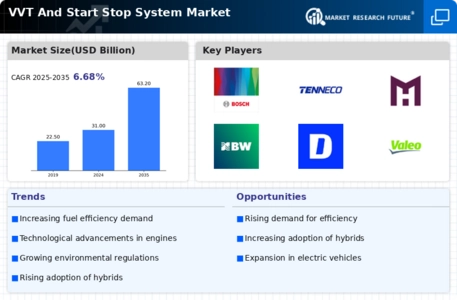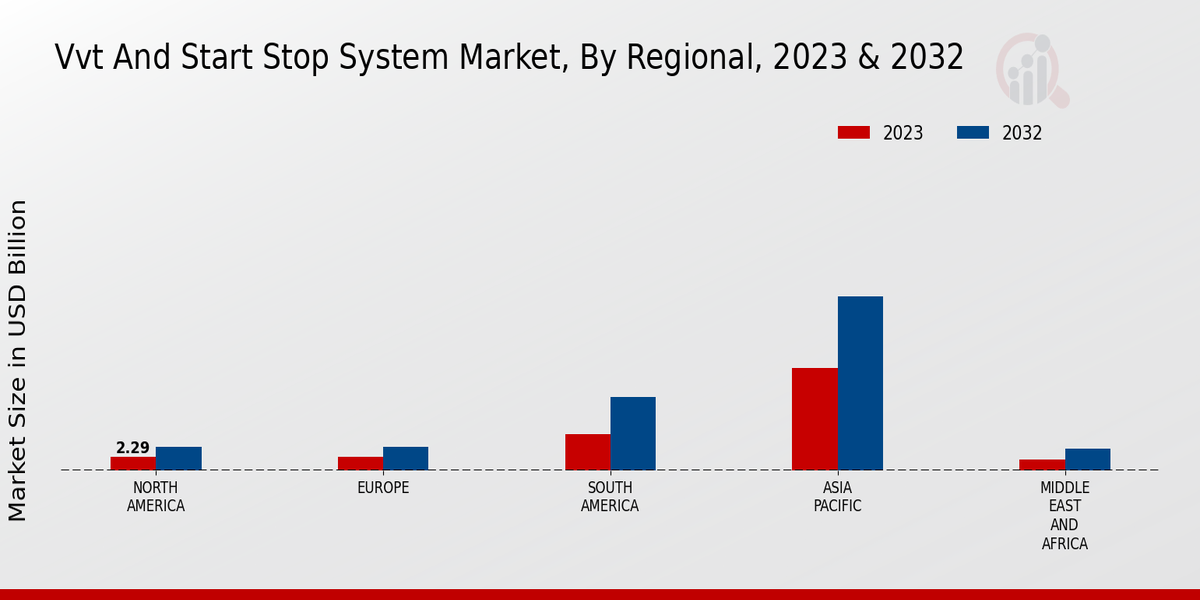Rising Fuel Efficiency Standards
The VVT And Start Stop System Market is experiencing a notable shift due to the increasing fuel efficiency standards imposed by regulatory bodies. These standards are compelling automotive manufacturers to adopt advanced technologies that enhance engine performance while reducing fuel consumption. The implementation of Variable Valve Timing (VVT) and Start Stop systems is becoming essential for compliance with these regulations. As of 2025, it is estimated that vehicles equipped with these systems can achieve up to 15% better fuel efficiency compared to traditional engines. This trend not only aligns with environmental goals but also appeals to consumers seeking cost-effective solutions in their vehicle choices. Consequently, the demand for VVT and Start Stop systems is likely to surge as manufacturers strive to meet these stringent requirements.
Consumer Demand for Eco-Friendly Vehicles
The VVT And Start Stop System Market is significantly influenced by the growing consumer demand for eco-friendly vehicles. As awareness of environmental issues increases, consumers are increasingly seeking vehicles that minimize their carbon footprint. VVT and Start Stop systems play a crucial role in this transition by optimizing engine performance and reducing emissions. Recent data indicates that vehicles equipped with these technologies can reduce CO2 emissions by approximately 10-15%. This shift in consumer preferences is prompting manufacturers to invest in these systems, thereby driving market growth. The integration of VVT and Start Stop technologies not only meets consumer expectations but also enhances the overall appeal of vehicles in a competitive market.
Shift Towards Hybrid and Electric Vehicles
The VVT And Start Stop System Market is witnessing a shift towards hybrid and electric vehicles, which is reshaping the automotive landscape. As consumers and manufacturers alike embrace electrification, the demand for efficient engine technologies becomes paramount. VVT and Start Stop systems are integral to hybrid vehicles, as they optimize engine performance and enhance fuel efficiency. The market for hybrid vehicles is projected to grow significantly, with estimates suggesting that by 2025, hybrids could account for over 25% of new vehicle sales. This transition is likely to drive the adoption of VVT and Start Stop technologies, as manufacturers seek to improve the efficiency of their hybrid offerings and meet consumer expectations for sustainable transportation.
Technological Innovations in Engine Design
The VVT And Start Stop System Market is benefiting from rapid technological innovations in engine design. Advances in engineering and materials science are enabling the development of more efficient and compact engine systems. These innovations facilitate the integration of VVT and Start Stop technologies, which enhance engine responsiveness and fuel efficiency. For instance, the introduction of lightweight materials and advanced control systems allows for better performance and lower emissions. As manufacturers continue to innovate, the market for VVT and Start Stop systems is expected to expand, with projections indicating a compound annual growth rate of around 8% over the next five years. This growth reflects the industry's commitment to improving engine efficiency and meeting consumer demands.
Government Incentives for Green Technologies
The VVT And Start Stop System Market is also being propelled by government incentives aimed at promoting green technologies. Various governments are implementing policies that encourage the adoption of fuel-efficient and low-emission vehicles. These incentives often include tax breaks, rebates, and grants for manufacturers and consumers alike. As a result, automotive companies are increasingly investing in VVT and Start Stop systems to qualify for these benefits. The financial support provided by governments is likely to stimulate market growth, as manufacturers are motivated to enhance their vehicle offerings with these technologies. This trend not only supports environmental goals but also fosters innovation within the automotive sector.


















Leave a Comment